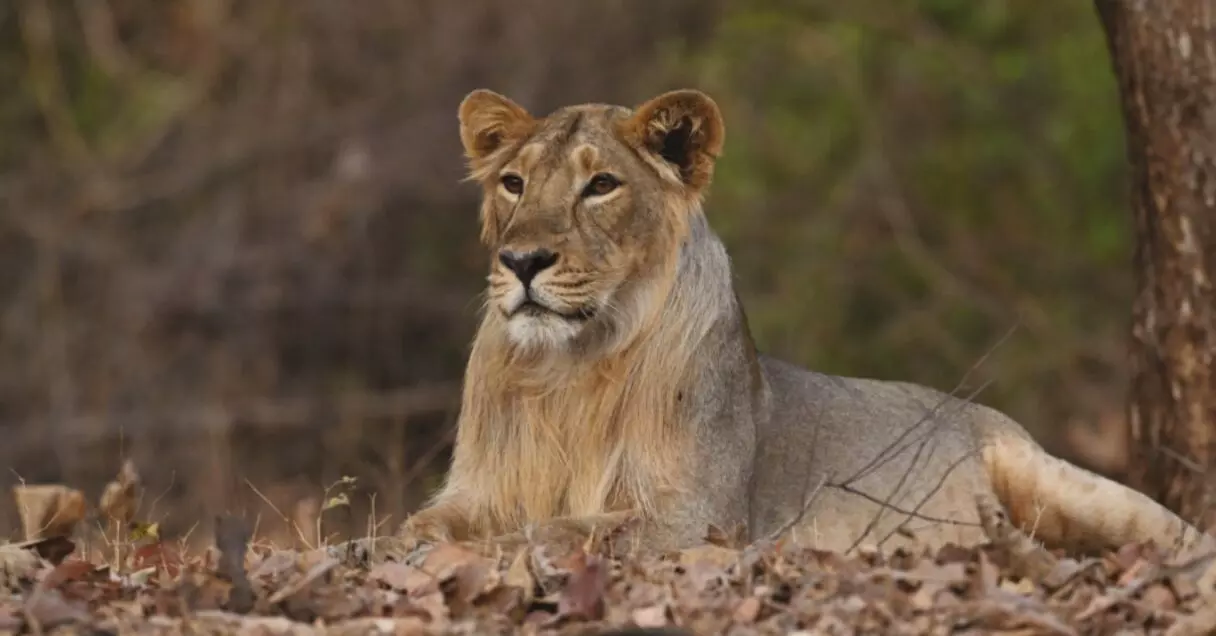Gujarat now home to 891 Asiatic Lions, sees 32% rise since June 2020
Gujarat’s Asiatic Lion population hits 891 in 2025; Amerli records highest numbers,196 adult males, 330 females
By Sri Lakshmi Muttevi
Gujarat now home to 891 Asiatic Lions
Gujarat: According to the latest data by the 16th Population Estimation of Asiatic Lions, Gujarat is home to 891 Asiatic lions in 2025—a significant rise of 32.19 per cent compared to the previous estimate from June 2020.
This announcement was made during the 7th meeting of the National Board for Wildlife, held at Sasan-Gir on March 3, and chaired by the prime minister. The population estimation exercise is conducted once every five years, and this year’s survey was carried out between May 10 and 13.
How was the population of lions calculated?
The estimation employed the Direct Beat Verification method, covering an extensive 35,000 sq. km area across 11 districts of Saurashtra.
This region was systematically divided into 8 regions, 32 zones, 112 subzones, and 735 sampling units. The survey engaged 3,854 individuals, including expert observers, enumerators, forest officials, NGOs, volunteers, local representatives and villagers.
The lion population in 2025 includes:
196 - adult males
330 -adult females
140 - sub-adults
225 – cubs
Significant increase in adult female lions
Of the total, 394 lions are part of the Source (Core) Population centred in Gir and its surrounding areas, while 497 belong to nine satellite populations. The Savarkundla-Liliya region in the Amreli satellite population recorded the highest lion numbers (125 in total), comprising 29 adult males, 43 adult females, 27 sub-adults and 26 cubs.
Significant growth was seen among adult lions, particularly adult females, whose numbers increased from 260 to 330—a rise of 26.92 per cent. The adult male-to-female ratio now stands at 1:1.68, while the adult female-to-cub ratio is 1:0.68.
Increase in area occupied by lions
Lion distribution has also expanded geographically, increasing from 30,000 sq. km in 2020 to 35,000 sq. km in 2025—a 16.67 per cent rise. Over the past decade, the lion population has grown by 70.36 per cent, from 523 in 2015 to 891 in 2025.
Amerli reports the highest population
Amreli district reported the highest lion population in Saurashtra with 339 lions, including 82 adult males, 117 adult females, 61 sub-adults and 79 cubs. During the census, lions were recorded at 358 locations—55.78 per cent in forested zones and 44.22 per cent in non-forested areas (27.61% in wastelands, 9.88% in agricultural land, 5.16% in riverine regions and 1.57% in other areas).
One of the largest prides recently observed included 24 lions. During the estimation, a pride of 20 lions was sighted at Sanjanpur Vidi in Palitana, Bhavnagar, consisting of 2 males, 6 females, and 12 cubs.
22 lions in corridor areas
The 2025 census also recorded lion populations in newly established satellite areas such as Barda Wildlife Sanctuary, Jetpur, Babra-Jasdan and newly formed corridors.
For the first time, 22 lions were observed in corridor areas. Barda Wildlife Sanctuary, now home to 17 lions, marks the realisation of a ‘second home’ for Asiatic lions within Gujarat—an important milestone for long-term conservation.
Strategic conservation efforts
A series of targeted and strategic conservation efforts, particularly since 2007 and intensified after 2018, have driven a transformative shift in lion conservation in Gujarat.
These include enhanced protection systems, continuous field monitoring, adoption of modern technologies for data-driven decisions and greater community involvement through initiatives like the Vanya Prani Mitra program, parapet-walled open wells and machchans (watchtowers).